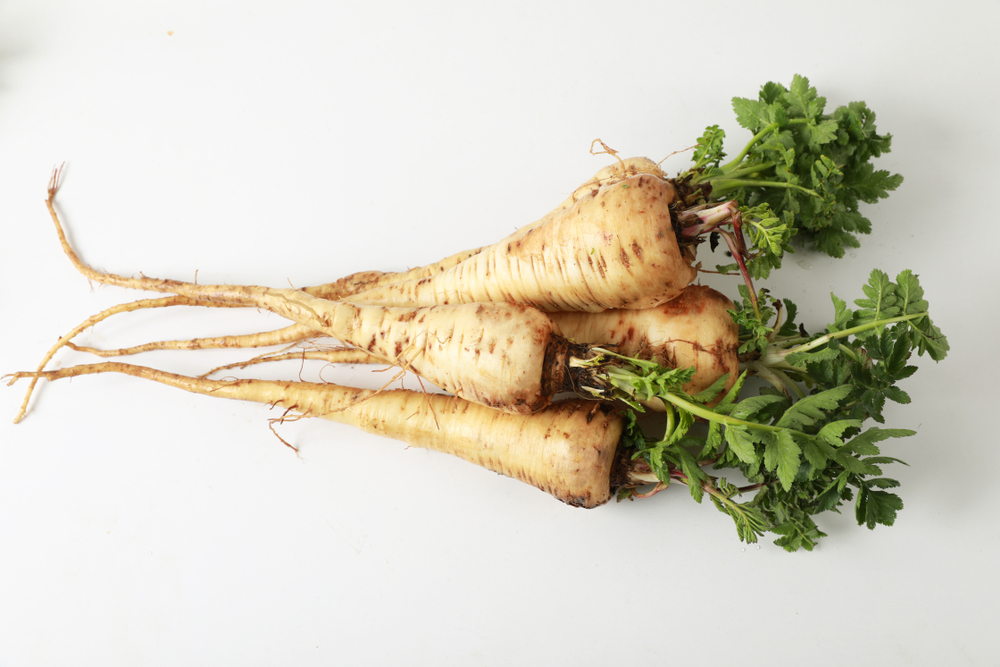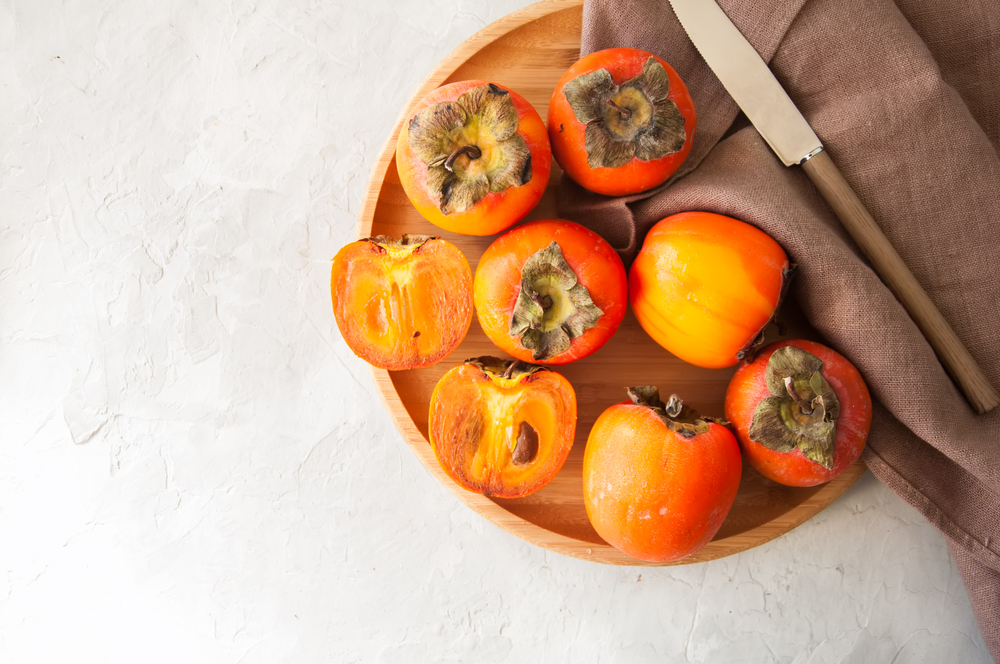The temperatures are dropping, our sweaters are coming out of their closets, and some new ingredients may be filling our plates as winter winds its way in. I’m talking sweet potatoes, yams, brussels sprouts, green beans, pumpkins, and squashes galore: all of which I hold near and dear to my heart. A roasted sweet potato stuffed with chickpeas, kale, and drizzled with some tahini? Yes. Brussels sprouts roasted with lemon, salt, and pepper and served aside a heaping pile of turkey and mashed potatoes? Yummm. And of course, we can’t forget the ongoing craze for all things spiralized—squash included!
But when it comes to incorporating fall foods into our dishes, I often find myself questioning where all the other great produce is hiding amidst the piles of pumpkins and bags of brussels sprouts lining my grocery store’s produce aisles. What about the collard greens, swiss chard, rutabagas, cabbage and turnips that get left by the wayside as we continue to choose the more popular produce?
Sure, we all love a warm mug of apple cider and some sweet potato casserole—but what fruits and veggies are we forgetting as we opt for yet another butternut squash soup? Now, don’t get me wrong, there’s no way I’m giving up my pumpkin spice and you don’t have to either. What I am saying, is that perhaps we could expand our palates and dine on some different produce this coming winter. Delving into new and unfamiliar territory can be scary, but choosing some more unique in-season produce doesn’t have to be. There are so many incredible options starting to pop up from the ground and into store shelves and all you have to do is look beyond the piles and pounds of potatoes. I’m here to give you a quick rundown of what types of produce to be looking for on your next shopping trip. Whether you decide to go full force and use them on their own or ease your way into things by pairing them alongside some of your other favorite foods, you can’t go wrong.
5 More Uncommon Fall Produce That Deserves Time To Shine
Scrumptious Celery
Let’s start things of with something familiar—celery. Yeah, we all know the long green stalks that make great additions to chicken wings, blue cheese, and a good, strong Bloody Mary (or two). But what about the bit that doesn’t get put on the plate—or glass—as often? Celery root, also known as celeriac, is the other half that tends to slip through the cracks because it’s not quite as pretty as its counterpart. Don’t judge a book by its cover though, as they say, which couldn’t be truer in this case. A very versatile veggie, celeriac has a crunchy texture and somewhat herbal taste that hides behind a rough and craggy exterior. After a quick scrub of the bulb, trim the ends and you’ll be ready to go. Keep it raw and slice it into salads or roast/bake it to use whole alongside some of your other favorite veggies. You can even blend it together with some vegetable stock and spices to create a spectacular soup. Whether I’m using it as the star of the show or just as a part of the crowd, celeriac always adds an unexpected and delicious twist to my fall-inspired dishes. So next time you see this knobby number at your farmer’s market or grocery store, don’t be scared to go beyond its more common counterpart of celery!
Palatable Parsnips
Moving on to our next star, I’m shifting the spotlight to something else that might look a little familiar—the parsnip. Similar in size and shape to the beloved carrot, only colored beige or creamy white, parsnips can be used much like their orange look-alikes. Boil, bake, mash, glaze, or roast this veggie exactly like you would with carrots, but you’ll have a slightly sweeter taste on your plate. Some flavors I personally love to pair with parsnips are rosemary, sage, or just a simple mix of garlic, salt, and pepper. Add steamed then pureed parsnips to mashed potatoes to help pack more vegetables into your diet without sacrificing texture or flavor, or just roast them on their own as a tasty side dish to your favorite entrée. When shopping, look for the smaller ones as they tend to have more flavor. Once home, make sure to wash and remove the ends and then feel free to use them just like you would a carrot—consider the parsnip a baby step when trying to incorporate new veggies into your fall foods.

Fabulous Fennel
Up next, let’s check out a vegetable that might be a bit less familiar. I’m talking about fennel, a veggie that may not get much attention from the average cook but should be brought into the forefront for its variety of flavors. Though it’s known by most for its licorice-scented seeds, fennel also has other tastes to it. Sliced and baked as a side dish, shaved thinly and tossed with some leafy greens and a light vinaigrette, or roasted and blended to make a soup or bisque, the fennel bulb tastes like anise (a flavor similar to parsley). And don’t forget about those lacey fronds that can be used as a garnish for anything, really! I love to add it on top of salads or baked chicken or blend it together with garlic, salt, pepper, lemon juice, and some plain greek yogurt to make a healthy homemade green goddess dressing. So, if you’ve ever been deterred from using fennel for its most commonly known taste of licorice, don’t let that fear keep you from playing the game any longer because there are so many other parts, flavors, and styles to spice up your dishes with this veggie.
Pleasant Persimmons
Now, it seems like root vegetables get most of the love when colder weather creeps in, but it’s important to remember that different fruits are coming into the season, too. First up to bat, let’s check out persimmons. What might be mistaken for a tomato, this slightly lighter orange fruit actually tastes like a mixture of sweetness and spice. There are two main types—fuyu and hachiya—that both look and taste unique from each other. Fuyu persimmons are rounder and squatter, and more forgiving when it comes to ripeness. They can be eaten when a little under-ripe and are sweet enough to stand alone. The Hachiya, on the other hand, are better off eaten when they’re very ripe or even overripe and can be quite bitter if eaten too early. These variety are better off added to desserts like purees and puddings to add a soft and sweet uniqueness. While many people prefer to scoop out the insides of persimmons to get the good stuff, their skins are totally edible. It’s up to you to choose how you want to try this fun fall fruit, but whatever method you pick, just make sure you give the persimmon a chance next time you go shopping!

Quite Lovely Quinces
Our final spotlight shines on another uncommon fruit—the quince. Imagine a cross between an apple and a pear, with a fuzzy skin like that of a peach, and you have a quince. It can be eaten raw but tends to give off a bit of an astringent (sharp or acidic) flavor, so my recommendation would be to cook them first. Quinces are great for making pastes, preserves, or jams, or can even be added into baked goods in place of applesauce or a bit of oil. Much like a pear, they can also be sautéed or poached and paired with your favorite meats. When shopping, take a similar approach as to the one you’d use when picking apples: look for quinces that are firm to the touch, colored bright yellow or gold, and don’t have many soft spots or bruises. Another great way to pick quinces is to take a whiff—a good quince will have a fragrant, strongly sweet smell to it. When you get home, simply rinse and rub off the fuzzy exterior and you’ll be ready to start experimenting. If you’re still a little nervous to try this fruit, it’s also been used by many cultures as a decorative plant. With its pale, pink blossoms, the quince plant has served as ornamental purposes for centuries—even more of a reason to love it.
These five foods certainly make for some pretty delicious and nutritious meals, but your journey of finding fall/winter produce doesn’t have to stop here. Remember that with the changing of seasons comes changing of harvests, and when it comes to eating whole and healthy foods it’s always a good idea to listen to mother Earth. So next time you’re thinking about making your usual sweet potato casserole or stuffed squash, consider pushing yourself past your comfort zone and grabbing some produce you’ve never paid much attention to. You may find a new favorite flavor and spend your summer days praying for colder weather just so you can make another jar of your soon-to-be-famous persimmon preserves or parsnip puree. You’ll never know until you try!

